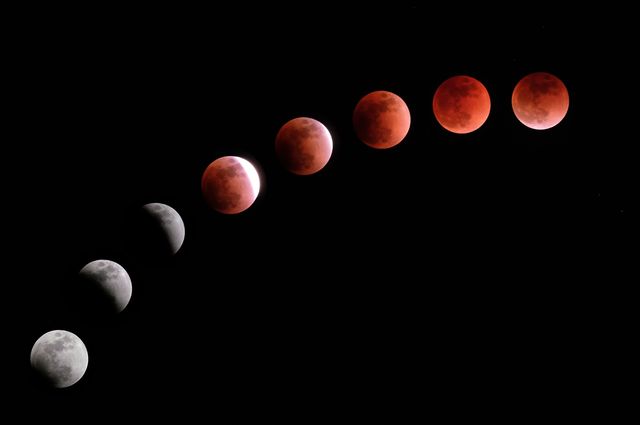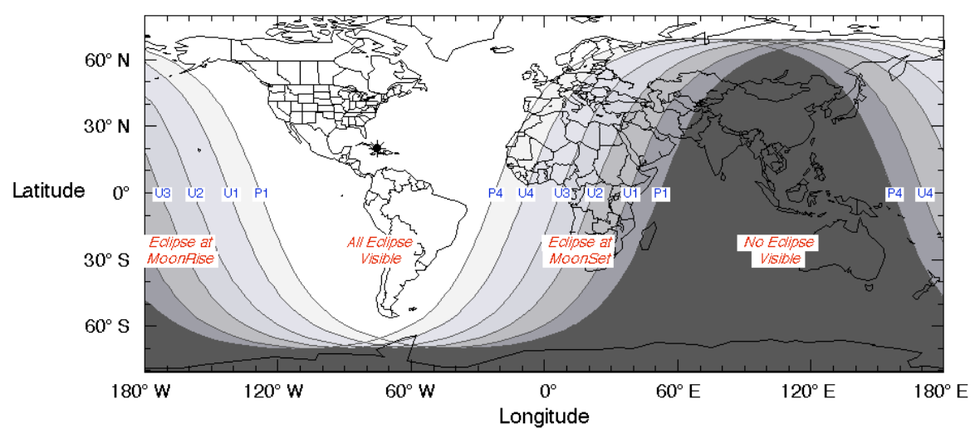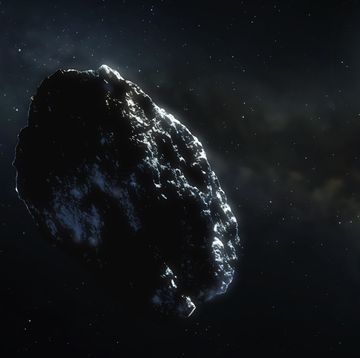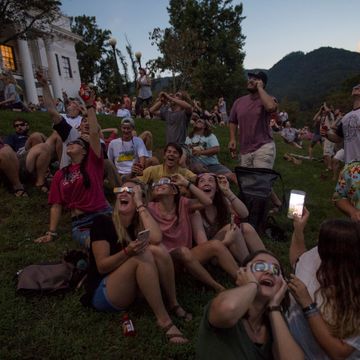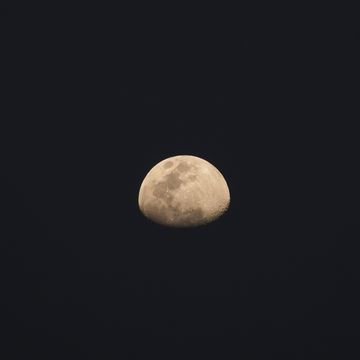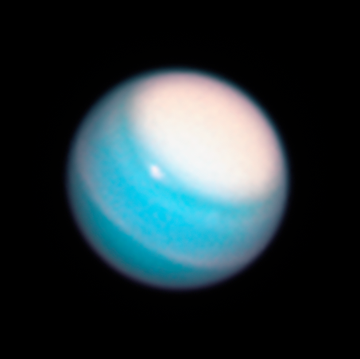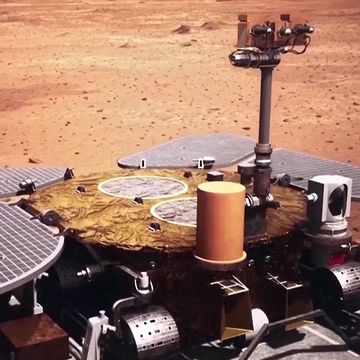On January 21, 2019 the United States and some other areas of the world got quite a show: a total lunar eclipse, lasting for an hour in totality, the moon appearing an eerie red hue. Those impressed with the show may be wondering, "When's my next chance?"
For those in North America, the answer is a little disappointing: there's not another eclipse in North America until July 5, 2020, and it'll be penumbral, which involves an entire area of the Moon being covered by the shadow of the Sun, but not the total sphere due to a misalignment between the Sun and the Earth.
The next lunar eclipse in general, though, is on July 16, 2019 and will be visible throughout the Southern Hemisphere. However, it will be a partial eclipse, meaning only a portion of the moon will be in shadow.
How Does a Lunar Eclipse Work?
The Great American Eclipse so many people witnessed in August 2017 was a total solar eclipse, in which the moon moves between the Earth and the sun in such a way as to block out our star. The last event on January 21, 2019, was a total lunar eclipse. In this case, the Earth came between the sun and the moon in just the right way so that the shadow of our planet is cast entirely across the moon. The moon has to be in just the right place in its orbit for this to happen.
There's also a penumbral eclipse, in which the moon is a bit inclined and is in the Earth's shadow, but not quite in a way that reaches totality as we see it in the "blood" moon. Sometimes, this is a complete shadow over the moon, but one so subtle it's hard to notice. Partial eclipses are a bit different, wherein only certain parts of the moon eclipse.
Where Will It Be Visible?
The July 2019 partial eclipse will be visible throughout South America, as well as large parts of Europe, Asia, Africa, and parts of Australia. A very, very narrow portion of Maine and New Brunswick will see the outermost edge of the eclipse, but only the southeast corner of coastal Maine.
The July 2020 eclipse will be visible throughout the United States except Alaska, as well as large portions of Canada, save the Yukon and Northwest Territories. The West Coast will experience a partial eclipse. South America and the West Coast of Africa will have full visibility, as will a portion of Europe, but the rest will be in a partial phase. A small portion of the East Coast of Africa will miss the Eclipse. It will not be visible in Asia or Australia.
When Does It Start?
The July 2019 eclipse will last around three hours, reaching its maximum eclipse at 21:31 UTC. The July 2020 eclipse will begin at 4:31 a.m., though it will be harder to see.
Why Are Total Eclipses Red?
The light coming through Earth is heavily filtered, with our atmosphere taking much of the brunt of filtering the light hitting the day side. When it gets to the thickest parts of the atmosphere, only the red band is “long” enough to make it through, with yellow and blue absorbing into the atmosphere. This effect gives the moon its reddish tint during an eclipse.
What Do I Need to See It?
Staring at the moon is not like staring at the sun. You can … actually do it. For a simple explanation why, here’s Astronomy Magazine’s senior editor Michael Bakich:
“The moon is always safe to look at because, just like objects here on Earth, we see it because it reflects sunlight. During an eclipse, the moon is in Earth’s shadow, so there’s even less light coming from it. So, yes, it's perfectly safe.”
You can even bust out the binoculars or telescope for a lunar eclipse, though you may want a telescope filter for the brighter eclipse areas. Don’t worry—they’re less like putting welding glass over your telescope and more like a pair of sunglasses, moderately dimming some of the light.
Is the Total Eclipse Different From a Blood Moon?
Not really, but that term, as metal as it sounds, comes from astrologers and conspiracy theorists. Everyone uses the term, but it doesn’t mean anything scientifically.
How Can I Watch It Even If I'm Not There?
We will update this section as the eclipse draws nearer.
